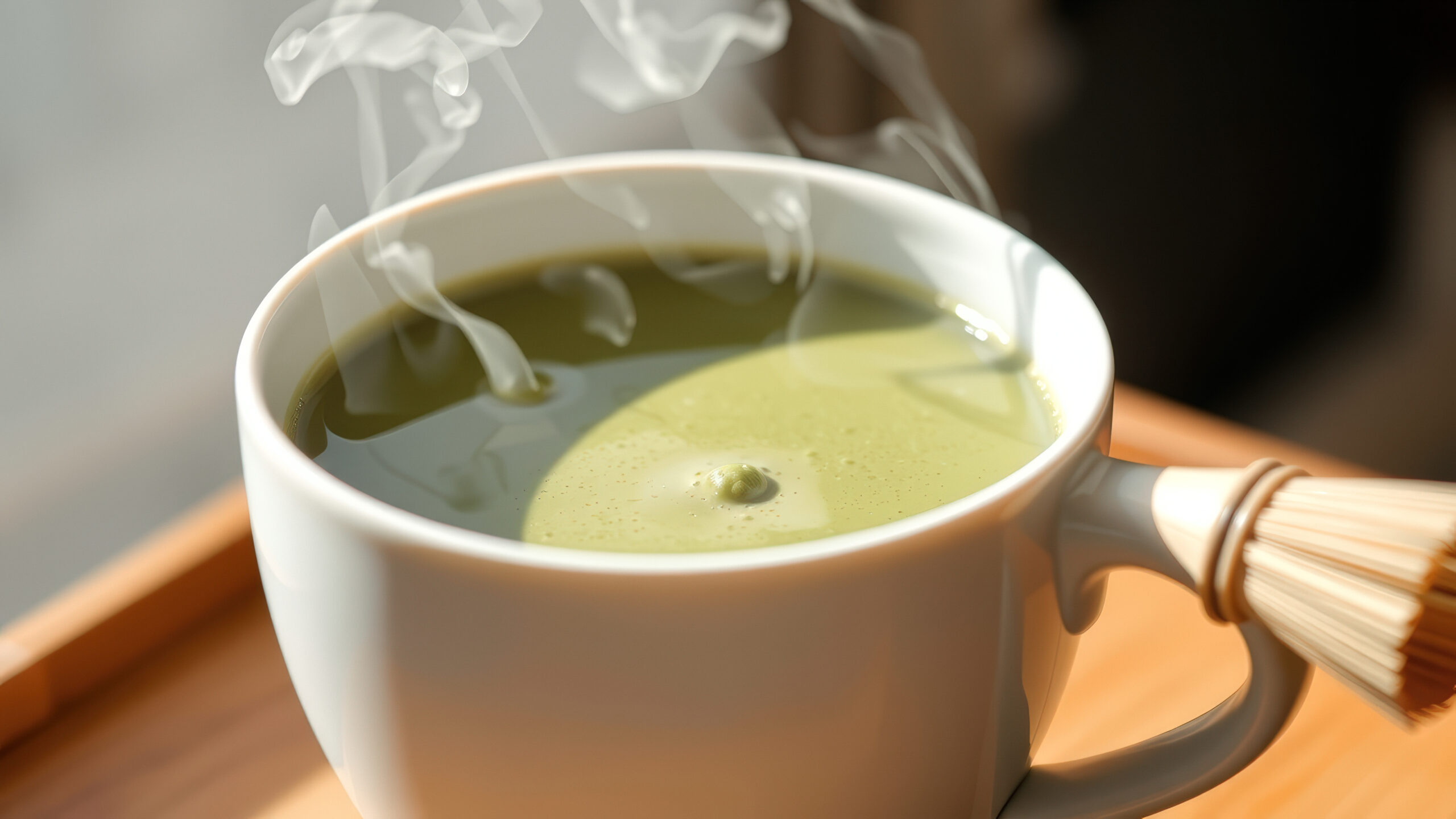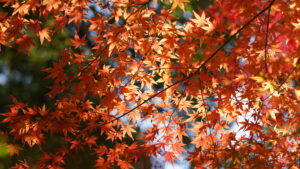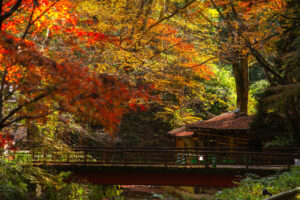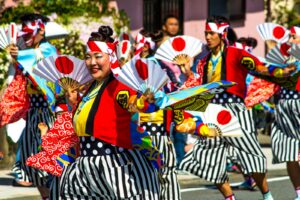In the tranquil world of Japanese culture, few practices embody the spirit of harmony, respect, purity, and tranquility as profoundly as Chanoyu, the Japanese tea ceremony. More than just a ritualistic preparation and consumption of tea, Chanoyu is an intricate dance of aesthetics, philosophy, and interpersonal connection. This article delves into the origins, tools, philosophies, and global influence of Chanoyu, shedding light on its enduring significance in contemporary society and its role as a form of meditation and mindfulness.
The Origins of Chanoyu: A Glimpse into History
Chanoyu finds its roots in the 9th century, when Japanese monks began to import tea from China, primarily for its stimulating effects during meditation. Over centuries, this simple act of tea drinking evolved into a refined cultural practice, heavily influenced by the Zen Buddhist philosophy. By the 15th and 16th centuries, under the guidance of figures such as Sen no Rikyū, Chanoyu took shape as a structured ceremony, marked by a specific set of rituals and aesthetics.
Rikyū emphasized the importance of simplicity, naturalness, and the concept of "wabi-sabi," which values the beauty in imperfection and transience. His influence helped establish Chanoyu not just as a means to enjoy tea, but as a spiritual practice that reflected the core tenets of Zen Buddhism. Throughout the Edo period, tea schools emerged, each promoting their unique interpretations and styles, further enriching the tradition.
The tea ceremony served as a refuge for samurai and aristocrats, offering a serene environment to escape from the pressures of daily life. The gathering of guests in a tea room, often amidst a serene landscape, became a cherished social event, strengthening relationships and fostering camaraderie. The historical significance of Chanoyu cannot be overstated, as it has played a vital role in Japanese culture for centuries, adapting to and reflecting the changing societal norms.
As Japan opened its doors to the West during the Meiji Restoration, Chanoyu continued to evolve, incorporating elements of Western culture while retaining its core principles. This adaptability has allowed Chanoyu to remain relevant through tumultuous periods in Japanese history, including wars and modernization, reflecting the resilience of this cherished cultural practice.
Today, Chanoyu is celebrated worldwide, transcending its historical roots and evolving into a global phenomenon. This rich tapestry of history underpins the contemporary practices of Chanoyu, making it a living art form that continues to captivate and inspire. The historical journey of Chanoyu sets the stage for understanding its profound impact on the philosophy and aesthetics of Japanese culture.
The Philosophy Behind the Japanese Tea Ceremony
At the heart of Chanoyu lies a philosophy rooted in Zen Buddhism, which emphasizes living in the present moment and finding beauty in simplicity. This philosophy is reflected in the four fundamental principles of the tea ceremony: harmony (wa), respect (kei), purity (sei), and tranquility (jaku). Each of these principles serves to guide participants in their interactions, both with each other and with the environment.
Harmony is achieved through the careful preparation and sharing of tea, as well as the consideration of all elements in the tea room, including the utensils, decor, and the surrounding nature. Respect is fostered in the manner participants treat each other and the ritual; every action is imbued with mindfulness and thoughtfulness. Purity speaks to the importance of cleanliness, not just in physical surroundings but also in the intent and spirit of the participants. Finally, tranquility emerges as a natural outcome when harmony, respect, and purity are in balance.
The philosophy of Chanoyu encourages participants to embrace the present and cultivate a sense of gratitude for each moment. This focus on mindfulness allows individuals to transcend the challenges of daily life and find solace in the act of tea preparation and consumption. It invites participants to slow down, breathe deeply, and immerse themselves in the experience, embodying the principles of Zen practice.
Moreover, this reflective practice serves as a reminder of the interconnectedness of all things. The careful selection and preparation of tea, along with the aesthetic use of natural materials, fosters an appreciation for nature and its impermanence. In essence, Chanoyu is not just a ceremony; it is a philosophy that invites individuals to cultivate awareness, respect, and gratitude in their everyday lives.
Through its philosophical underpinnings, Chanoyu has become a profound practice that transcends the mere act of drinking tea. It connects participants with themselves, each other, and the natural world, reinforcing the notion that every moment is a unique expression of life. This deep-rooted philosophy continues to resonate with contemporary practitioners, inspiring a path toward mindfulness and peace.
Essential Tools: Unpacking the Chanoyu Utensils
The utensils used in Chanoyu are not only functional but also imbued with symbolic meaning, each carrying its own history and significance. The most essential tool is the chawan, or tea bowl, which serves as the vessel for the powdered green tea known as matcha. The design and texture of the chawan can vary greatly, reflecting the season, the occasion, and the aesthetic sensibilities of the host.
Another critical utensil is the chasen, a bamboo whisk used to aerate the matcha and create a frothy texture. The chasen’s delicate craftsmanship embodies the principles of wabi-sabi, celebrating the beauty of handmade objects. The harmonious interaction between the chawan and chasen underscores the importance of each utensil in producing a perfect cup of tea.
Additionally, the chashaku, a bamboo scoop, is employed to measure the correct amount of tea powder. Its elongated design reflects the elegance of the ceremony, while the use of natural materials reminds participants of the connection to nature. Other tools, such as the mizusashi (water container) and the furo (portable brazier), serve practical purposes while contributing to the overall aesthetic of the ceremony.
The aesthetic choices made when selecting these utensils speak volumes about the host’s intention and their understanding of the ceremony’s principles. The careful consideration of texture, color, and form elevates the experience, inviting guests to engage with each item on a deeper level. This attention to detail is a hallmark of Chanoyu, where every element is thoughtfully curated to create a cohesive atmosphere.
The selection and arrangement of utensils also reflect the seasonal changes, with specific tools and decorations chosen to resonate with the time of year. This seasonal sensitivity further enhances the connection between the participants and the natural world, reinforcing the idea that Chanoyu is a living practice that evolves with the environment.
Ultimately, the essential tools of Chanoyu are more than mere objects; they embody the philosophy and artistry of this ancient practice. Through the careful selection, use, and appreciation of these utensils, participants can deepen their understanding of the ceremony and its underlying principles, enriching their experience and connection to this timeless art form.
The Role of Nature in the Tea Ceremony Experience
Nature plays a central role in Chanoyu, shaping the environment where the ceremony takes place and influencing the aesthetic choices made by the host. The tea room, or chashitsu, is often designed to blend seamlessly with its natural surroundings, incorporating elements such as sliding doors, tatami mats, and garden views. This architectural harmony fosters a sense of tranquility, inviting participants to immerse themselves in the experience.
The selection of seasonal decor, known as kakejiku (hanging scrolls) and hanamizu (flower arrangements), further reflects the importance of nature in Chanoyu. These elements are chosen based on the season, weather, and occasion, allowing participants to appreciate the beauty and transience of life. The presence of seasonal flowers or natural motifs in the scrolls encourages guests to connect with the rhythms of nature.
Moreover, the choice of tea itself is often influenced by the season, with different types of matcha and preparation styles highlighting the flavors and qualities that resonate with specific times of the year. For instance, vibrant green tea in spring evokes the freshness of new growth, while deeper, richer flavors in autumn reflect the changing landscape. This seasonal consciousness enhances the sensory experience of the ceremony.
Connection to nature is also emphasized in the rituals of preparation, where the host may incorporate natural elements such as water from a nearby stream or tea sourced from a local farm. This practice reinforces the idea that the tea ceremony is a celebration of the earth’s resources, inviting participants to express gratitude for the natural world.
The tea garden, or shoin, often serves as a space for contemplation and reflection before entering the tea room. Guests may stroll through the garden, appreciating the carefully curated plants and landscapes, which serve to ground them in the present moment. This transition from the outside world to the tea space encourages a deeper connection with nature and prepares participants for the ritual ahead.
In essence, nature is an integral part of Chanoyu, shaping not only the physical environment but also the emotional experience of participants. Through the careful integration of natural elements, the tea ceremony becomes a profound exploration of the delicate balance between human experience and the natural world, fostering a deeper appreciation for both.
The Importance of Aesthetics in Chanoyu Practices
Aesthetics play a fundamental role in Chanoyu, influencing every aspect of the ceremony from the selection of utensils to the arrangement of the tea room. The concepts of wabi (rustic simplicity) and sabi (the beauty of age) are paramount, guiding practitioners toward an appreciation for the imperfections and natural beauty found in everyday objects. This aesthetic philosophy enriches the experience, inviting participants to engage deeply with their surroundings.
The tea room itself is designed to create an atmosphere of warmth and intimacy. The use of natural materials such as wood, stone, and bamboo creates a sense of authenticity and connection to the earth. The design often incorporates elements that evoke seasonal changes, with decor that reflects the aesthetics of the time. This sensitivity to the environment enhances the overall experience, allowing participants to feel a part of something larger than themselves.
The arrangement of utensils also reflects aesthetic principles, with careful attention paid to balance, proportion, and harmony. Each item is selected not only for its functionality but also for its visual appeal, creating a cohesive and inviting space. The interplay of colors, textures, and shapes enhances the sensory experience, encouraging guests to appreciate the nuances of the tea ceremony.
Furthermore, the act of serving tea is an art form in itself, with specific movements and gestures that embody grace and intention. The host’s mindful handling of utensils and attention to detail create a visually captivating experience that resonates with participants. This meticulous choreography transforms the simple act of drinking tea into a beautiful performance that speaks to the heart of Chanoyu.
The importance of aesthetics extends beyond the visual realm, influencing the auditory and olfactory experiences as well. The sounds of boiling water, the whisking of matcha, and the gentle clinking of utensils create a symphony that complements the visual beauty of the ceremony. The scent of the tea, combined with the natural fragrances of the tea room, further enriches the experience, engaging all senses in the ritual.
In Chanoyu, aesthetics become a vehicle for expressing the underlying philosophy of the tea ceremony. By cultivating an environment that celebrates beauty in simplicity and imperfection, participants are invited to engage more deeply with the experience, fostering a sense of peace and connection within themselves and with one another. The aesthetic dimension of Chanoyu transcends mere decoration; it embodies the spirit of the practice, transforming the ritual into an immersive sensory journey.
Step-by-Step: The Ritual of Serving and Drinking Tea
The ritual of serving and drinking tea in Chanoyu follows a carefully choreographed sequence of actions, each imbued with significance and intention. The ceremony typically begins with the host preparing the tea room, ensuring that every element is in place to create a serene atmosphere. This preparation may include cleaning the utensils, arranging seasonal decorations, and setting the table.
Once the space is ready, guests are invited to enter the tea room, often through a garden path that symbolizes leaving the outside world behind. Upon entering, participants are encouraged to appreciate the carefully curated environment, fostering a sense of mindfulness as they transition into the ceremonial space.
The host begins by preparing the matcha, using the chashaku to scoop the tea powder into the chawan. The precise measurement and method of preparation reflect the host’s skill and understanding of the ceremony. Hot water is then poured into the bowl, and the chasen is employed to whisk the matcha into a frothy consistency. This process is not rushed; each movement is deliberate, embodying the principles of mindfulness and attention to detail.
Once the tea is prepared, the host presents the chawan to the first guest, who receives it with both hands, demonstrating respect for the effort that has gone into its preparation. The guest admires the bowl, taking a moment to appreciate its aesthetics before taking a sip. This pause encourages a deeper connection between the participant and the tea, allowing them to savor the flavors fully.
After drinking, the guest gently wipes the rim of the chawan with a cloth, signifying respect for the utensil and the host. They then pass the bowl to the next guest, continuing the cycle of sharing. Each participant’s engagement in this process emphasizes the communal aspect of Chanoyu, fostering a sense of connection and harmony among those present.
The ritual concludes with the host thanking the guests and offering a final reflection on the experience. This moment of gratitude encapsulates the essence of Chanoyu, reinforcing the significance of each interaction and the shared appreciation for the beauty of the ceremony. The step-by-step process of serving and drinking tea transforms what might seem like a simple act into a profound practice of mindfulness, respect, and interconnectedness.
The Social Dynamics of Tea Ceremony Gatherings
The social dynamics of Chanoyu are integral to the overall experience, as the tea ceremony serves as a platform for fostering relationships and building community. Participants come together in a shared space, each playing a unique role within the ritual. This communal aspect encourages interaction and connection, transcending the boundaries of everyday life.
As guests enter the tea room, they are greeted with warmth and hospitality from the host, who sets the tone for the gathering. This initial interaction is crucial, as it establishes a sense of trust and openness among participants. The host’s demeanor, attention to detail, and respect for each guest create an inviting atmosphere where everyone feels valued.
During the ceremony, the act of sharing tea fosters a sense of equality among participants. Regardless of social status or background, each individual is treated with respect and consideration, reinforcing the idea that everyone is a vital part of the shared experience. This egalitarian approach encourages guests to engage authentically, connecting on a deeper level.
Moreover, the tea ceremony often serves as a space for meaningful conversations and reflections. As participants sip their tea, they may share stories, insights, or observations, creating a bond that transcends the ritual itself. This exchange of ideas fosters a sense of community and belonging, allowing individuals to connect over shared experiences and values.
The social dynamics are also influenced by the specific context of the gathering. Formal ceremonies may adhere to strict protocols, while more casual gatherings may allow for greater flexibility and spontaneity. Regardless of the setting, the core principles of harmony, respect, and mindfulness remain central, guiding interactions between participants and fostering a sense of unity.
Ultimately, the social dynamics of Chanoyu enhance the richness of the experience, transforming the tea ceremony into a profound celebration of human connection. By creating an environment that nurtures relationships and encourages open dialogue, Chanoyu embodies the spirit of community and shared understanding, reinforcing its timeless relevance in contemporary society.
Chanoyu as a Form of Meditation and Mindfulness
Chanoyu is often described as a form of meditation, offering participants an opportunity to cultivate mindfulness and presence in their lives. The very act of preparing and serving tea requires focused attention and intentional movement, allowing individuals to immerse themselves in the moment and disconnect from distractions. This meditative quality is one of the defining aspects of the tea ceremony.
Each step of the ritual invites participants to engage fully with their senses, from the sight of the vibrant green matcha to the sound of water boiling in the kettle. As guests enter the tea room, they are encouraged to pause and appreciate their surroundings, fostering a sense of awareness that transcends the rush of daily life. This intentional approach to the ceremony creates a sacred space for reflection and contemplation.
The repetitive motions involved in preparing the tea can also serve as a form of rhythmic meditation. The whisking of matcha, the pouring of water, and the careful handling of utensils become a series of mindful actions that ground participants in the present. This mindfulness practice encourages individuals to let go of external worries and distractions, allowing them to focus entirely on the experience at hand.
Furthermore, Chanoyu promotes a sense of gratitude and appreciation for the present moment. As participants savor each sip of tea, they are reminded of the effort and intention that went into its preparation. This cultivation of gratitude extends beyond the tea itself, encouraging participants to acknowledge the beauty in everyday life and the connections they share with others.
The meditative quality of Chanoyu resonates with the broader principles of mindfulness, which emphasize being present, non-judgmental awareness of one’s thoughts and feelings. By engaging in the tea ceremony, participants can develop a deeper understanding of themselves and their relationships with others, fostering emotional resilience and inner peace.
In a fast-paced world where distractions abound, Chanoyu stands as a timeless practice that invites individuals to slow down, breathe, and connect with themselves and their surroundings. Its emphasis on mindfulness and meditation serves as a reminder of the importance of presence in our lives, offering a pathway to greater awareness and appreciation for the beauty of each moment.
Modern Interpretations: Chanoyu in Contemporary Japan
In contemporary Japan, Chanoyu continues to evolve, adapting to the changing cultural landscape while retaining its core principles. While traditional practices remain highly respected, modern interpretations of the tea ceremony have emerged, reflecting the diverse tastes and lifestyles of contemporary society. These adaptations have allowed Chanoyu to remain relevant and accessible to new generations.
One significant trend in modern Chanoyu is the incorporation of contemporary design and aesthetics. Tea rooms are being reimagined with minimalist decor, clean lines, and modern materials, creating a fusion of traditional and contemporary styles. This evolution reflects the changing preferences of younger generations and their desire for spaces that resonate with modern sensibilities.
Moreover, the tea ceremony is increasingly being seen as a social activity rather than a strictly formal ritual. Casual tea gatherings, known as "sado," have gained popularity, where participants can enjoy tea in a more relaxed environment. This shift has fostered greater inclusivity, inviting people from various backgrounds to engage with Chanoyu and explore its cultural significance.
In addition, the rise of wellness culture has led to a renewed interest in the meditative aspects of Chanoyu. Many individuals are drawn to the practice as a means of finding balance and tranquility in their busy lives. Workshops and classes focused on mindfulness and meditation through tea have become popular, allowing participants to explore the philosophical underpinnings of Chanoyu in a contemporary context.
Social media and digital platforms have also played a role in reshaping the perception of Chanoyu. Online communities dedicated to sharing tea-related content, tutorials, and experiences have created a global dialogue around the practice. This increased visibility has sparked interest in Chanoyu beyond Japan’s borders, inspiring individuals worldwide to explore its beauty and significance.
Despite these modern interpretations, the essence of Chanoyu remains steadfast. Participants are still encouraged to embrace the principles of harmony, respect, purity, and tranquility, regardless of the context. This adaptability ensures that Chanoyu continues to resonate with people today, fostering a deeper appreciation for tradition while allowing for personal expression and creativity.
In contemporary Japan, Chanoyu embodies a harmonious blend of tradition and innovation, reflecting the dynamic nature of culture and society. As new generations engage with this timeless practice, Chanoyu remains a vital part of Japan’s cultural heritage, inspiring individuals to cultivate mindfulness, connection, and appreciation for the beauty of life.
Global Influence: How Chanoyu Inspires the World
The influence of Chanoyu extends far beyond Japan, resonating with people around the globe who seek to embrace its philosophy of mindfulness, respect, and aesthetic appreciation. As interest in Eastern philosophies and practices has grown, Chanoyu has emerged as a






